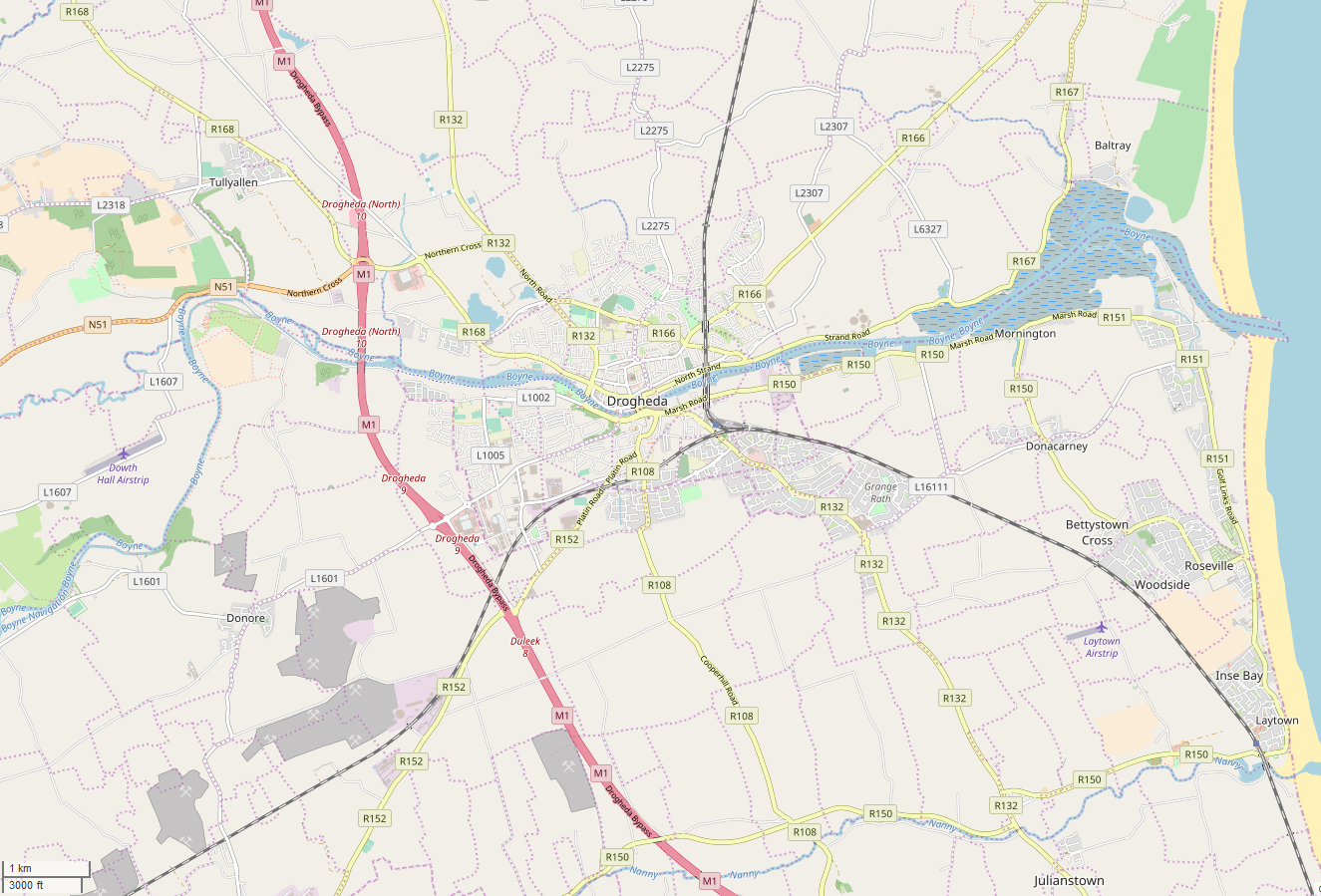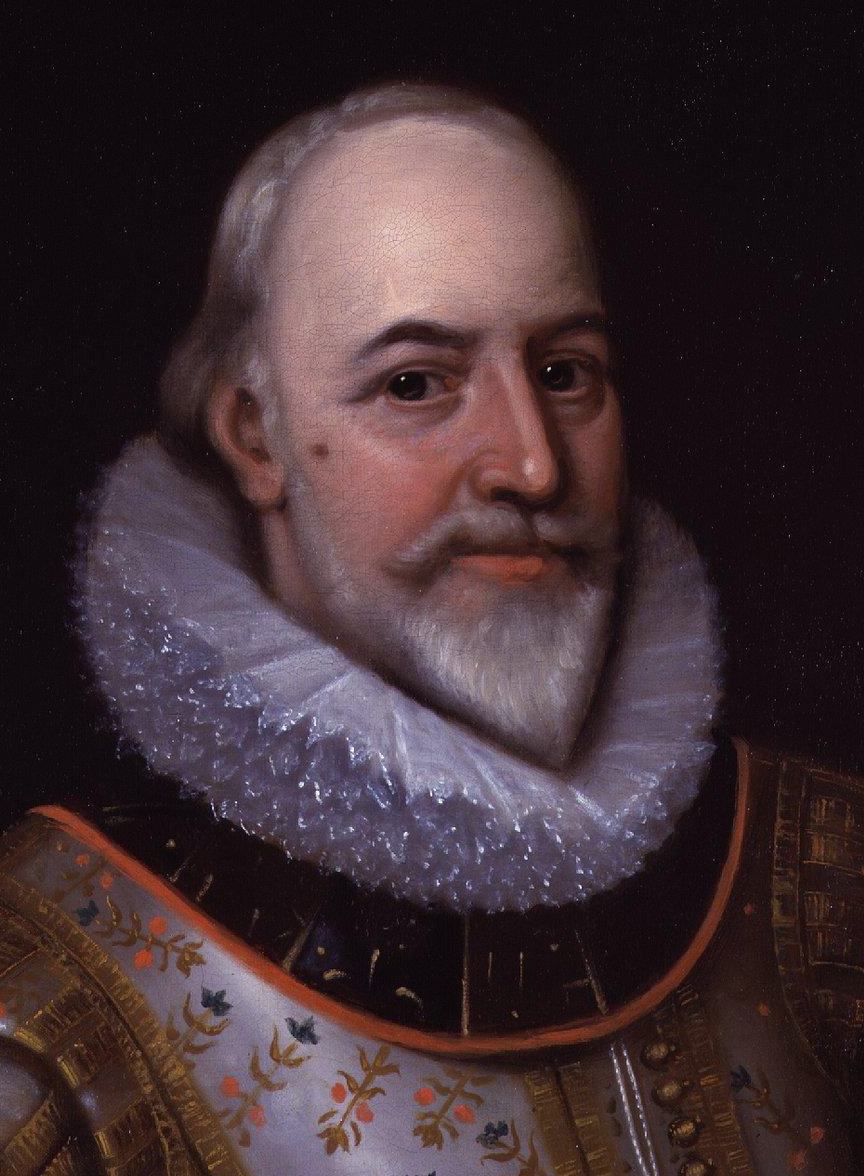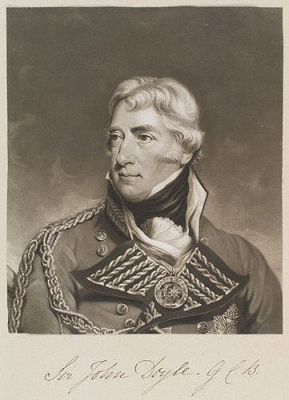|
Charles Moore, 1st Marquess Of Drogheda
Field Marshal Charles Moore, 1st Marquess of Drogheda (29 June 1730 – 22 December 1822), styled Viscount Moore from 1752 until 28 October 1758 and then Earl of Drogheda until 2 July 1791, was an Irish peer and later a British peer, and military officer. He bore the colours of his regiment at the Battle of Culloden in April 1746 during the Jacobite risings and later commanded the 18th Light Dragoons during operations against the Whiteboys in Ireland. He also sat as Member of Parliament in the Irish House of Commons and, having served as Chief Secretary to the Lord Lieutenant of Ireland, he went on to become Master-General of the Irish Ordnance. Career Born the son of Edward Moore, 5th Earl of Drogheda and Sarah Moore (daughter of Brabazon Ponsonby, 1st Earl of Bessborough), Moore joined the Army in 1744 as a cornet in the 12th Dragoons, and bore the colours at the Battle of Culloden in April 1746 during the Jacobite risings. He was promoted captain in 1750 and reached ... [...More Info...] [...Related Items...] OR: [Wikipedia] [Google] [Baidu] |
Drogheda
Drogheda ( , ; , meaning "bridge at the ford") is an industrial and port town in County Louth on the east coast of Ireland, north of Dublin. It is located on the Dublin–Belfast corridor on the east coast of Ireland, mostly in County Louth but with the south fringes of the town in County Meath, north of Dublin. Drogheda has a population of approximately 41,000 inhabitants (2016), making it the List of settlements on the island of Ireland by population, eleventh largest settlement by population in all of Ireland, and the largest town in the Republic of Ireland by both population and area. It is the last bridging point on the River Boyne before it enters the Irish Sea. The UNESCO World Heritage Site of Newgrange is located west of the town. Drogheda was founded as two separately administered towns in two different territories: Drogheda-in-Kingdom of Meath, Meath (i.e. the Lordship of Meath, Lordship and Liberty of Meath, from which a charter was granted in 1194) and Drogheda ... [...More Info...] [...Related Items...] OR: [Wikipedia] [Google] [Baidu] |
Irish Board Of Ordnance
The Board of Ordnance in the Kingdom of Ireland (1542–1800) performed the equivalent duties of the British Board of Ordnance: supplying arms and munitions, overseeing the Royal Irish Artillery and the Irish Engineers, and maintaining the fortifications in the island. Following the Acts of Union 1800, the Board was abolished and the duties taken over by the United Kingdom Board of Ordnance. The various officials of the Board were compensated with pensions for their loss of salary and emoluments. Officials of the Board of Ordnance ''lists are incomplete before 1760'' Master-General of the Ordnance Salary in 1800: £1,500 * In 1539: Sir John Travers * 1559–1587: Edward Maria Wingfield * 1588: Sir George Carew * 1592: Sir George Bourchier * 1605: Oliver St John, 1st Viscount Grandison * 1614: ... * 1617: Toby Caulfeild, 1st Baron Caulfeild * 1627: William Caulfeild, 2nd Baron Caulfeild * 1634: Sir John Borlase (jointly with Sir Thomas Lucas) * 1648: Roger Boyle, 1st Baron B ... [...More Info...] [...Related Items...] OR: [Wikipedia] [Google] [Baidu] |
Governor Of Kinsale And Charles Fort
The governor of Kinsale was a military officer who commanded the garrison at Kinsale and Charles Fort in County Cork. The office became a sinecure and in 1833 was to be abolished from the next vacancy. List of governors of Kinsale and Charles Fort Governors *1690: Charles Churchill *1693: The Earl of Inchiquin *1719: Lord Harry Powlett *1723: Humphrey Gore *1726: Gervais Parker *1739–1740: John Ligonier *1749: Robert Frazer * Philip Anstruther *1759–1764: John Folliott *1765–1770: The Earl of Drogheda *20 March 1770: James Gisborne *8 September 1770–1801: The Lord Rossmore *1801–1806: William Neville Gardiner *1806–1819: Sir Cornelius Cuyler *1819–1827: Sir David Baird *1827–1830: William Guard *1830–1849: Sir Warren Marmaduke Peacocke Lieutenant-governors *: James Waller (died 1702) * Henry Hawley (died 1724) *1724: George Bate *1725: Gervais Parker *1747–1759: John Folliott * –1776: Nicholas Price *1776– : Sir Francis James Buchanan *178 ... [...More Info...] [...Related Items...] OR: [Wikipedia] [Google] [Baidu] |
County Meath
County Meath (; gle, Contae na Mí or simply ) is a county in the Eastern and Midland Region of Ireland, within the province of Leinster. It is bordered by Dublin to the southeast, Louth to the northeast, Kildare to the south, Offaly to the southwest, Westmeath to the west, Cavan to the northwest, and Monaghan to the north. To the east, Meath also borders the Irish Sea along a narrow strip between the rivers Boyne and Delvin, giving it the second shortest coastline of any county. Meath County Council is the local authority for the county. Meath is the 14th-largest of Ireland's 32 traditional counties by land area, and the 8th-most populous, with a total population of 220,296 according to the 2022 census. The county town and largest settlement in Meath is Navan, located in the centre of the county along the River Boyne. Other towns in the county include Trim, Kells, Laytown, Ashbourne, Dunboyne, Slane and Bettystown. Colloquially known as "The Royal County", the historic ... [...More Info...] [...Related Items...] OR: [Wikipedia] [Google] [Baidu] |
Grand Lodge Of Ireland
The Grand Lodge of Ireland is the second most senior Grand Lodge of Freemasons in the world, and the oldest in continuous existence. Since no specific record of its foundation exists, 1725 is the year celebrated in Grand Lodge anniversaries, as the oldest reference to Grand Lodge of Ireland comes from the ''Dublin Weekly Journal'' of 26 June 1725. This describes a meeting of the Grand Lodge to install the new Grand Master, The 1st Earl of Rosse, on 24 June. The Grand Lodge has regular Masonic jurisdiction over 13 Provincial Grand Lodges covering all the Freemasons of the island of Ireland, and another 11 provinces worldwide. History There is considerable evidence of Masonic Lodges meeting in Ireland prior to the 18th century. The story of the "Lady Freemason", Elizabeth St. Leger, dates to a time prior to the existence of the Grand Lodge; also, there are references to Lodge meetings across Dublin in a speech given in Trinity College, Dublin, as far back as 1688. The oldest art ... [...More Info...] [...Related Items...] OR: [Wikipedia] [Google] [Baidu] |
St Canice (Parliament Of Ireland Constituency)
St Canice, also called Irishtown, was a constituency represented in the Irish House of Commons from the 1661 until 1800. Irishtown, Kilkenny, Irishtown was a ancient borough, borough within the civil parish, parish of St Canice in the county of the city of Kilkenny. The borough was separate from the city itself, which was represented by Kilkenny City (Parliament of Ireland constituency), Kilkenny City constituency. The borough was disfranchised by the Acts of Union 1800. Compensation for the loss of the patronage was awarded in the standard amount of £15,000. The claim of Hugh Hamilton (bishop), Hugh Hamilton, Bishop of Ossory to this compensation was disallowed; instead it went to the Commissioners of Annates#England, First Fruits. Members of Parliament 1661–1801 References * * {{DEFAULTSORT:Saint Canice Constituencies of the Parliament of Ireland (pre-1801) Historic constituencies in County Kilkenny 1661 establishments in Ireland 1800 disestablishments in Irel ... [...More Info...] [...Related Items...] OR: [Wikipedia] [Google] [Baidu] |
Lieutenant-colonel
Lieutenant colonel ( , ) is a rank of commissioned officers in the armies, most marine forces and some air forces of the world, above a major and below a colonel. Several police forces in the United States use the rank of lieutenant colonel. The rank of lieutenant colonel is often shortened to simply "colonel" in conversation and in unofficial correspondence. Sometimes, the term 'half-colonel' is used in casual conversation in the British Army. In the United States Air Force, the term 'light bird' or 'light bird colonel' (as opposed to a 'full bird colonel') is an acceptable casual reference to the rank but is never used directly towards the rank holder. A lieutenant colonel is typically in charge of a battalion or regiment in the army. The following articles deal with the rank of lieutenant colonel: * Lieutenant-colonel (Canada) * Lieutenant colonel (Eastern Europe) * Lieutenant colonel (Turkey) * Lieutenant colonel (Sri Lanka) * Lieutenant colonel (United Kingdom) * Lie ... [...More Info...] [...Related Items...] OR: [Wikipedia] [Google] [Baidu] |
Major
Major (commandant in certain jurisdictions) is a military rank of commissioned officer status, with corresponding ranks existing in many military forces throughout the world. When used unhyphenated and in conjunction with no other indicators, major is one rank above captain, and one rank below lieutenant colonel. It is considered the most junior of the field officer ranks. Background Majors are typically assigned as specialised executive or operations officers for battalion-sized units of 300 to 1,200 soldiers while in some nations, like Germany, majors are often in command of a company. When used in hyphenated or combined fashion, the term can also imply seniority at other levels of rank, including ''general-major'' or ''major general'', denoting a low-level general officer, and ''sergeant major'', denoting the most senior non-commissioned officer (NCO) of a military unit. The term ''major'' can also be used with a hyphen to denote the leader of a military band such as ... [...More Info...] [...Related Items...] OR: [Wikipedia] [Google] [Baidu] |
Captain (British Army And Royal Marines)
Captain (Capt) is a junior officer rank of the British Army and Royal Marines and in both services it ranks above lieutenant and below major with a NATO ranking code of OF-2. The rank is equivalent to a lieutenant in the Royal Navy and to a flight lieutenant in the Royal Air Force. The rank of captain in the Royal Navy is considerably more senior (equivalent to the Army/RM rank of colonel) and the two ranks should not be confused. In the 21st-century British Army, captains are often appointed to be second-in-command (2IC) of a company or equivalent sized unit of up to 120 soldiers. History A rank of second captain existed in the Ordnance at the time of the Battle of Waterloo. From 1 April 1918 to 31 July 1919, the Royal Air Force maintained the junior officer rank of captain. RAF captains had a rank insignia based on the two bands of a naval lieutenant with the addition of an eagle and crown above the bands. It was superseded by the rank of flight lieutenant on the fol ... [...More Info...] [...Related Items...] OR: [Wikipedia] [Google] [Baidu] |
The History Of Parliament
The History of Parliament is a project to write a complete history of the United Kingdom Parliament and its predecessors, the Parliament of Great Britain and the Parliament of England. The history will principally consist of a prosopography, in which the history of an institution is told through the individual biographies of its members. After various amateur efforts the project was formally launched in 1940 and since 1951 has been funded by the Treasury. As of 2019, the volumes covering the House of Commons for the periods 1386–1421, 1509–1629, and 1660–1832 have been completed and published (in 41 separate volumes containing over 20 million words); and the first five volumes covering the House of Lords from 1660-1715 have been published, with further work on the Commons and the Lords ongoing. In 2011 the completed sections were republished on the internet. History The publication in 1878–79 of the ''Official Return of Members of Parliament'', an incomplete list of the na ... [...More Info...] [...Related Items...] OR: [Wikipedia] [Google] [Baidu] |
12th Royal Lancers
The 12th (Prince of Wales's) Royal Lancers was a cavalry regiment of the British Army first formed in 1715. It saw service for three centuries, including the First World War and the Second World War. The regiment survived the immediate post-war reduction in forces, but was slated for reduction in the 1957 Defence White Paper, and was amalgamated with the 9th Queen's Royal Lancers to form the 9th/12th Royal Lancers (Prince of Wales's) in 1960. History Early wars The regiment of dragoons was raised in Reading by Brigadier-General Phineas Bowles as the Phineas Bowles's Regiment of Dragoons in July 1715 as part of the response to the Jacobite rebellion. It was employed escorting prisoners to London later in the year. In 1718, the regiment was placed on the Irish establishment and posted to Ireland, where it remained for 75 years. In 1751, the regiment was officially styled the 12th Dragoons. In 1768, King George III bestowed the badge of the three ostrich feathers and the motto ... [...More Info...] [...Related Items...] OR: [Wikipedia] [Google] [Baidu] |
Cornet (military Rank)
Cornet was originally the lowest grade of commissioned officer in a British cavalry troop, the modern equivalent being a second lieutenant. The rank was abolished by the 1871 Cardwell Reforms, which replaced it with sub-lieutenant. Although obsolete, the term is still used when referring to a newly commissioned officer (the equivalent of a second lieutenant) within the British Army regiment of the Blues and Royals. The cornet rank was also used by other nations such as the Imperial Russian Army and the Prussians. Etymology A ''cornet'' or "cornet of horse" was in the 17th and 18th century a term for a group of cavalry (typically 100–300 men), so-called because it was accompanied by a cornet player (a trumpet-like instrument, from Latin ''cornū'', "horn"). Later "cornet" came to refer to the fifth commissioned officer in a cavalry troop, who carried the colours; it never referred to the cornet player himself. An alternative etymology claims that the term is derived from a ... [...More Info...] [...Related Items...] OR: [Wikipedia] [Google] [Baidu] |






